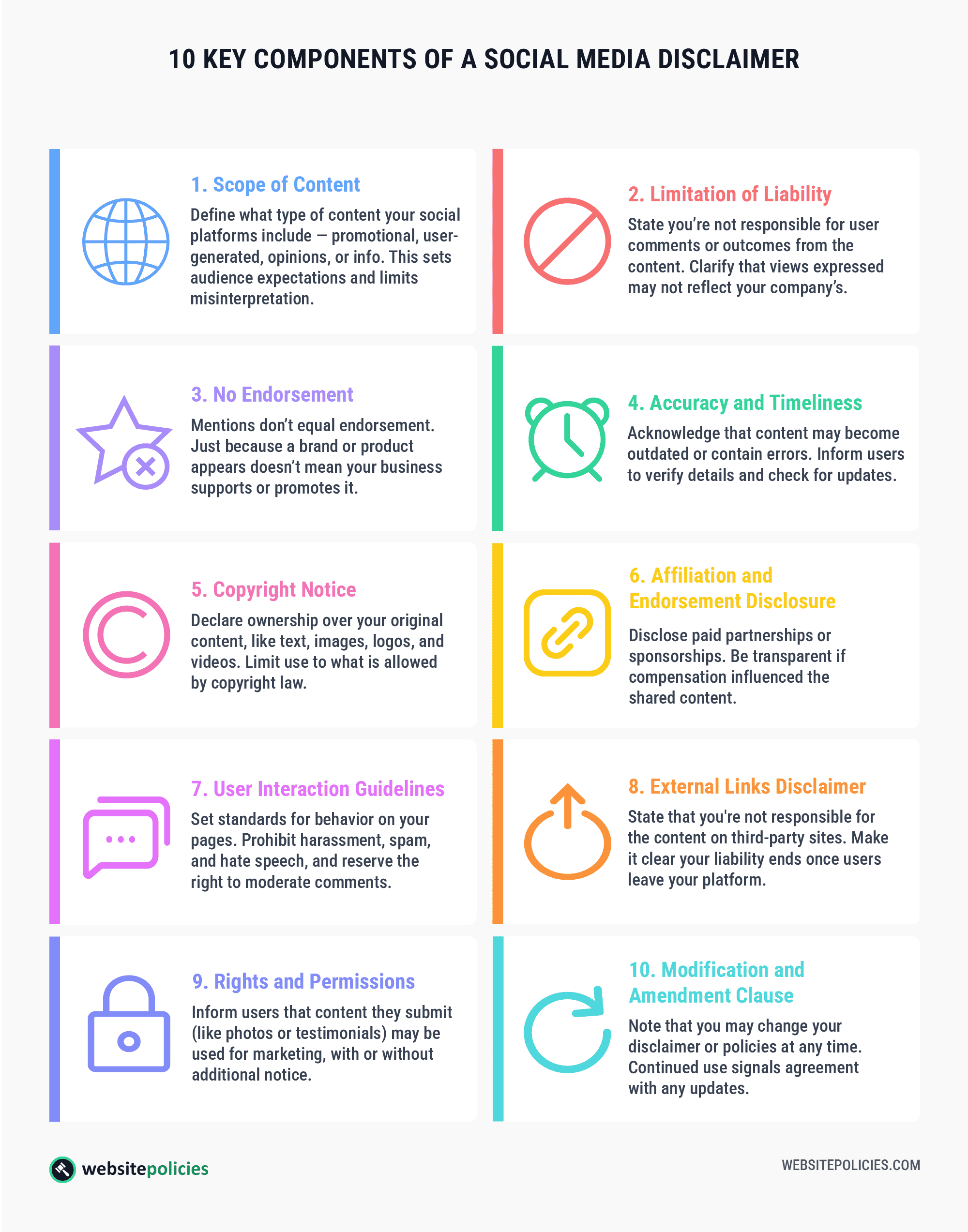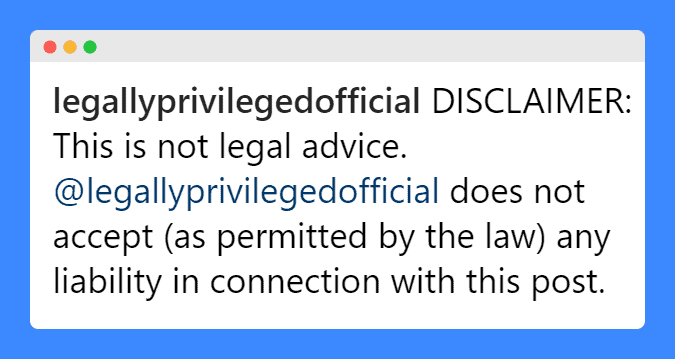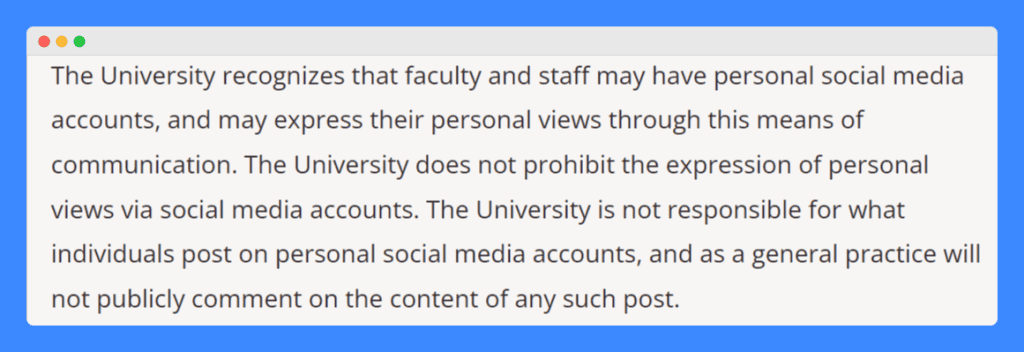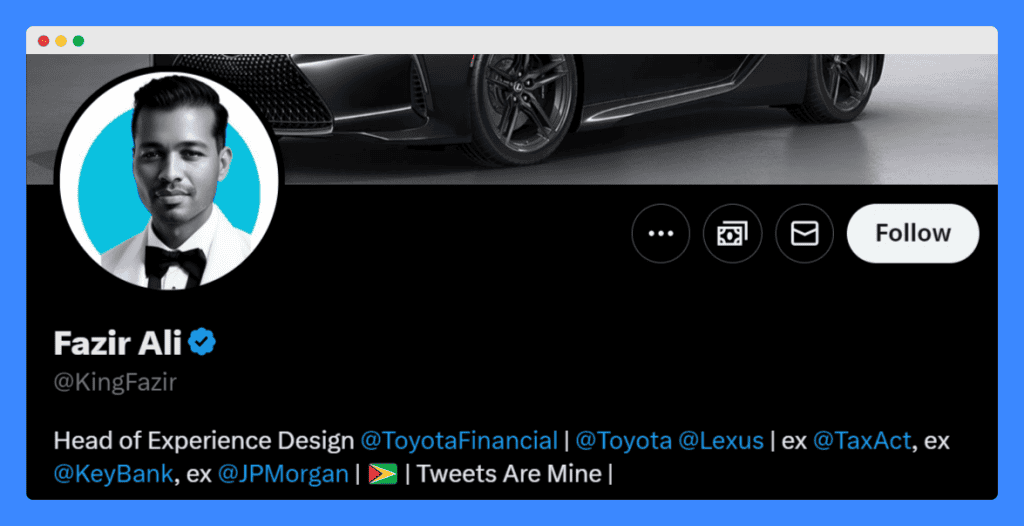Social media is a powerful tool for businesses to reach and engage with their audience. However, these companies must learn to manage the legal and reputational risks that come with online communication.
This is where a social media disclaimer comes in.
A social media disclaimer is a statement that clarifies your business’ stance and intentions. In turn, it helps reduce the risk of being held responsible or liable for misunderstandings, errors, or offensive content shared on your platforms.
In this guide, we’ll talk about the types, importance, and key components, as well as how you can create an effective social media disclaimer for your business.
- A social media disclaimer protects your business by clarifying the nature of your content and limiting liability.
- Regular updates to your disclaimer ensure you’re compliant with legal changes and evolving social media norms.
- Without a disclaimer, you’re at greater risk of legal issues and misunderstandings with your audience.
Table of Contents
PRO TIP: Take the hassle of writing your own disclaimer away with our disclaimer generator trusted by over 200,000 businesses. It’ll save you hours of work and possible costly legal mistakes.
Types of a Social Media Disclaimer
Different types of social media disclaimers serve a specific purpose, from clarifying the nature of shared content to outlining the boundaries of legal responsibilities.
Here are the most common types you might want to consider implementing:
Opinion Disclaimer
An opinion disclaimer clarifies that the thoughts and beliefs expressed on your social media platforms reflect the views expressed by you or your team and not necessarily those of your business as a whole.
It serves to dissociate the company from personal views that may be shared on its social media platforms, thereby protecting the business from legal liabilities associated with these opinions.
This type of disclaimer is also particularly relevant for businesses with multiple contributors to their online content, such as employees, guest posters, or affiliated writers.
For example, Tecovas, a cowboy boots store that also offers styling tips, has this on its website’s Terms of Use page:

This shields the business from potential disputes arising from misinterpretations of content posted under its brand. It also encourages readers to exercise their own judgment when engaging with the content.
Affiliate Links Disclaimer
An affiliate links disclaimer is used by online businesses to inform their audience that some links on their social media or website are affiliate links. This means the business may earn a commission if visitors click on these links and make purchases.
The purpose of an affiliate disclaimer is to maintain transparency about the affiliate relationship. It is also used to disclose that some content may be used for promotional purposes, ensuring compliance with advertising standards.
Mallory Brooke’s YouTube video disclaimer is a great example of a clear and concise affiliate links disclaimer:

This upfront disclosure aligns with FTC guidelines that require transparency about affiliate relationships. At the same time, it reassures viewers that her endorsements are based on her experience, rather than solely on potential earnings.
Copyright Disclaimer
Online businesses use a copyright disclaimer to clarify the ownership of content published on their social media platforms.
It helps users distinguish between original content created by the business and content that is owned by third parties but under license or fair use. The purpose of this disclaimer is to prevent copyright infringement claims.
By stating the origin and ownership of the content, you can make sure users understand which materials they may legally share or repurpose and which they may not.
PRO TIP: While a copyright disclaimer is important, it’s often not enough. Consider implementing additional measures like watermarks for extra protection.
Fair-Use Disclaimer
While a copyright disclaimer clarifies ownership and warns against unauthorized use, a fair-use disclaimer declares the intention behind using copyrighted material without permission under the fair-use doctrine.
This doctrine allows for limited use of copyrighted material, typically for purposes like criticism, comment, education, news reporting, or research.
On this TikTok post, for example, BigWheelBikeLife adds this fair-use disclaimer:

The caption mentions Section 107 of the Copyright Act of 1976, which explains that certain uses of copyrighted content are legally permissible and do not infringe on the original owner’s rights.
Including this in their social media post helps BigWheelBike Life preemptively address potential copyright infringement issues.
Who Needs a Social Media Disclaimer?
Any business that uses social media to communicate or interact can benefit from a disclaimer to mitigate potential legal issues and clarify the nature of their content.
Specifically, those who publish content that might be mistaken for professional advice or misrepresent the affiliations and opinions of the person or organization need a well-written disclaimer on social media.
This could include:
Healthcare Providers
Healthcare professionals often share medical or healthcare advice on social platforms. These pieces of advice are intended to be used for general informational purposes only, not as a substitute for professional consultation.
A disclaimer helps prevent misunderstandings that could lead to misuse of this information and potential harm or loss or damage due to misapplication of advice.
Legal Firms
Law firms and legal advisors frequently post content that could be construed as legal advice. A disclaimer clarifies that such information is for educational purposes and should not violate the legal standards for offering personalized legal counsel without a formal client relationship.
Nonprofits and Charities
Organizations often share stories and information about others on their social media for fundraising purposes.
With a good social media disclaimer, they can make sure the content is recognized as promotional and that the stories or data shared do not imply endorsement by those featured unless explicitly stated.
Educational Institutions
Schools and universities often have social media sites used for sharing educational content, which might be interpreted as official policy or advice. Disclaimers clarify that such information is for educational use and may not be up-to-date or comprehensive.
Financial Advisors and Firms
Financial advisors sharing market insights or investment tips must use disclaimers to clarify that such information is not intended as specific investment advice.
It can also be used to remind potential clients that investing involves risks, potentially leading to financial loss. This helps manage the expectations and actions of their audience.
Why Do You Need a Social Media Disclaimer for Your Website?
You need a social media disclaimer for your website to manage legal risks associated with the content you post. It also helps your audience understand the nature and limitations of the information you have made available via these platforms.
Basically, social media disclaimers can be used:
- To protect your business from being held responsible for content posted by a third-party entity, including comments, shares, and likes.
- To assert ownership of your original content and protect it from unauthorized use.
- To distance your business from controversial or harmful content posted by employees or others associated with your brand.
- To clarify the content posted on social media is not professional advice and should not be relied upon as such.
- To comply with requirements where social media disclaimers are legally required, such as when promoting products or services or collecting personal information.
- To protect privacy by including an opinion disclaimer that separates your personal opinions from those of your business.
- To outline expectations for employees regarding their personal social media posts. This includes promotion of the company or reference to the company.
A social media disclaimer effectively communicates the scope and intent of your online presence. It also establishes boundaries that protect your business legally and ethically.
10 Key Components of a Social Media Disclaimer
A well-crafted social media disclaimer is built on a foundation of specific statements that address various potential risks. To effectively protect your business, make sure to include the following:

1. Scope of Content
This section defines what your business’s social media presence covers and the type of content you publish.
Here is where you make your expectations clear about what your audience can encounter, whether it’s promotional material, user-generated content, informational posts, or personal opinions.
As a result, you get to maintain your brand’s integrity and shield your business from potential liabilities associated with ambiguous or misinterpreted content.
2. Limitation of Liability
This clause typically states that the company is not responsible for any damages or issues that may arise from the use of your site or your social media page, including any posts or comments made by users.
Instead, it clearly sets out that the views and opinions expressed here belong solely to their respective authors and do not necessarily reflect the opinions of your company.
Here’s a good example of that from Bulletproof:

PRO TIP: While a limitation of liability clause is important, it’s not a magic shield. It’s best to consult an attorney to ensure it’s legally sound and tailored to your needs.
3. No Endorsement
A no-endorsement clause clarifies that any mentions of products, services, or individuals on your social media platforms do not constitute an endorsement unless explicitly stated.
This is particularly relevant when users or a member of the public post comments, share content, or are featured in any way on your platform. It’s like saying,
“Just because we talk about something doesn’t mean we love it.”
This part helps protect your business from being associated with or seen as supporting or approving potentially controversial or harmful content or entities.
4. Accuracy and Timeliness
In this clause, you address the potential for information shared on your site and platforms to become outdated or to contain inaccuracies.
This acknowledges that the rapidly changing nature of information and the dynamic environment of social media can lead to situations where posted information beyond the control of the business is outdated or incorrect.
For example, Pura Vida’s disclaimer below helps manage customer expectations and mitigates liability for any decisions made based on such information:

Here’s another way to word this:
“We strive to provide accurate and up-to-date information; however, we cannot guarantee that all the content on our platform is current or error-free. Information may change rapidly, and some details reported in earlier posts or comments including updates may have since been superseded.”
PRO TIP: Ensure updates to critical posts are clear and timely to maintain trust. Always review content periodically for accuracy and relevance.
5. Copyright Notice
A copyright notice in a social media disclaimer is a declaration that specifies the ownership of content published on your platform.
For online business owners like yourself, this clause establishes the legal protection of your intellectual property, including text, images, logos, and videos.
It informs users and participants may use your content only in ways permitted by copyright laws, typically for personal, non-commercial use, unless explicitly authorized.
6. Affiliation and Endorsement Disclosure
For transparency, businesses must disclose their relationships with other entities. You can do that through your social media affiliation and endorsement disclaimer.
This section clarifies whether your business is partnered with, sponsored by, or receiving benefits from other companies that could influence the content shared on your platforms. It is particularly important when content could be perceived as promotional or biased.
In your social media posts, you can say,
“For details on our affiliations and any endorsements made, please see our full disclosure page. All partnerships are chosen with sole discretion to align with our business values and audience interests.”
Many social media influencers use this, saying something like,
“This post is sponsored by [brand name]. All opinions are my own, but I received compensation for this post.”
7. User Interaction Guidelines
Another critical component of a social disclaimer is the user interaction guidelines. This part provides clear rules and expectations for how users should engage with content and each other on your platforms.
Here’s a good example from Slate Shop that explicitly forbids inappropriate behaviors such as personal attacks, offensive language, or spam:

This part is also where you can inform users that the business reserves the right to delete any comments it deems inappropriate or defamatory in order to maintain a respectful and safe environment.
You can write something like,
“Please be respectful in your interactions. Any of the following may be deleted or edited by the moderators: harassment, hate speech, or explicit content. We also reserve the right to terminate accounts that violate these standards.”
8. External Links Disclaimer
An external links disclaimer states that your business is not responsible for the content of websites or programs not related to or affiliated with your own.
Here’s how Vera Bradley puts it into easy-to-understand language:

Essentially, it’s a way to protect a business from any potential issues that may arise from users clicking on links that lead to other platforms.
PRO TIP: To protect your reputation from risks associated with external links, be clear about where your responsibility ends and another website’s begins.
9. Rights and Permissions
The rights and permissions section of a social media disclaimer specifies the authority of the business regarding the use of content that appears on its platforms, including user-generated content.
This clause typically states that the business may use this information for internal and external promotional purposes and maintains the right to review and approve any content before it’s used in such ways.
It’s particularly relevant for online business owners who engage with customers through campaigns or contests where users submit their own content.
Through this disclaimer, both the business and the participants understand how contributions can be used and shared.
10. Modification and Amendment Clause
This last part outlines the business’ right to alter, revise, or update the disclaimer and the content on its platforms without prior notice.
It provides businesses with the flexibility to correct errors or omissions in the information shared and adapt to evolving legal and business environments.
Additionally, it covers updates that might be necessary as the company grows or as industry standards change.
One way to get this message across is by saying,
“We reserve the right to make changes to our content and policies at any time. Should you wish to have the information updated or corrected, please contact us directly.”
You can also say something like,
“We reserve the right to modify or amend this disclaimer at any time without notice. Your continued use of our social media platforms after any changes indicates your acceptance of the revised disclaimer.”
How Do You Write a Social Media Disclaimer for Your Business?
Writing a social media disclaimer for your business involves clear articulation of policies and terms. Here’s a step-by-step guide to walk you through the process:
Step 1: Understand Your Needs
Assess the specific risks and legal requirements associated with your business’s social media use. What types of content do you share? What kinds of interactions occur on your platforms?
Answering these questions will help you determine which disclaimer components are necessary.
Step 2: Draft Clear, Concise Statements
For each key component identified earlier, write clear and concise statements that reflect your policies and intentions. Ensure that these statements are easily understandable to avoid any ambiguities.
Use specific phrases that directly address common concerns and guidelines. For instance, regarding user-generated content, include a statement like,
“For the safety and respect of all users, please do not post offensive or inappropriate content.”
Step 3: Cover All Legal Bases
Include clauses that protect your business legally, such as limitations of liability, intellectual property rights, and the right to modify content. Consult with a legal expert to ensure your disclaimer meets all applicable laws and regulations.
Step 4: Get Professional Review
Before finalizing your disclaimer, have it reviewed by a legal professional. This step is crucial to ensure your disclaimer is not only thorough but also compliant with all legal requirements.
PRO TIP: Use a disclaimer generator for a quick start. Customize the generated text to fit your specific business needs and legal requirements.
Where to Display a Social Media Disclaimer
A social media disclaimer should be prominently displayed where it is easily available to the public so users can understand and acknowledge it.
Some have a dedicated social media disclaimer page on their website while others include links in or within their:
- Privacy policy so that it aligns with other legal disclosures
- The footer of the website where it can be found consistently across all pages
- About or Bio sections of social profiles
- Post captions, especially for sensitive content
Social Media Disclaimer Examples You Can Learn From
Here’s how various organizations and businesses effectively implement disclaimers on their social media sites.
1. @kevinjubbalmd on YouTube
This personal social media disclaimer sample from @kevinjubbalmd on YouTube is exemplary for healthcare providers.
Not only does it differentiate personal opinion from professional medical advice but also emphasizes that the information is for educational purposes only.

Moreover, it outlines the risks associated with using the content, including liability limitations and affiliate link disclosures to ensure transparency and legal safeguarding.
2. @LegallyPrivilegedOfficial on Instagram
Despite being brief, this disclaimer is effective because it clearly and concisely disclaims any legal advice. The use of “not legal advice” is straightforward and leaves no room for confusion.

Additionally, the disclaimer explicitly states that the account holder accepts no liability, which is crucial in protecting the legal professional from potential claims.
3. Salvation Army Children and Youth on Facebook
For nonprofits and charities, here is a good sample disclaimer for Facebook from Salvation Army Children and Youth.

By stating that the views expressed are those of the participants, the Salvation Army effectively disassociates itself from potentially controversial or divisive opinions.
This protects the organization’s reputation and maintains its neutral stance on various issues. This is essential for organizations with a diverse audience and a mission focused on unity and compassion.
4. University of West Georgia and Catholic University of America
The UWG’s Instagram disclaimer is a commendable example for educational institutions. It clearly delineates the separation between individual opinions and the university’s official stance.

It emphasizes a clear non-endorsement of external links, too. This not only maintains the integrity of the university but also manages liability concerning external content.
If you’re looking for excellent social media disclaimers for employees examples, check out the Catholic University of America’s dedicated social media disclaimer page. There, you’ll see this:

The university respects and recognizes the distinction between personal and professional use of social media by faculty and staff.
By explicitly stating its stance on personal social media usage, it protects the institution while allowing individuals the freedom to express personal views.
5. @KingFazir on X
The bio from @KingFazir on X incorporates a concise but effective social media disclaimer.

By stating “Tweets Are Mine,” he communicates that his posts are his personal opinions and not those of his current or past employers.
This type of statement is crucial in X disclaimers as it helps to prevent any misunderstandings that the content shared might represent the official views of my employer.
Social Media Disclaimer Template
This social media disclaimer template is provided as a basic guide to help you create your disclaimer for your blog or website. While it offers a general framework, it’s important to remember that this is just an example.
To ensure thorough legal protection, you should customize the content to suit your specific needs and consider including any additional topics or details that are relevant to your situation.

Frequently Asked Questions
Is a social media disclaimer legally binding?
A social media disclaimer can be legally binding if it meets legal standards and is clearly communicated.
What happens if you don’t have a social media disclaimer?
Without a social media disclaimer, your business risks legal liability and misunderstandings. It may lead to disputes over content responsibility.
Do I need a different disclaimer for each social media platform?
It’s not necessary to have a different disclaimer for each platform. A single, comprehensive disclaimer can cover all your social media.
How often should I update my social media disclaimer?
Update your social media disclaimer annually or when your content strategy or legal requirements change. Regular reviews ensure compliance and relevance.
Do influencers need social media disclaimers?
Yes, influencers need social media disclaimers to clarify sponsored content and manage liability.



